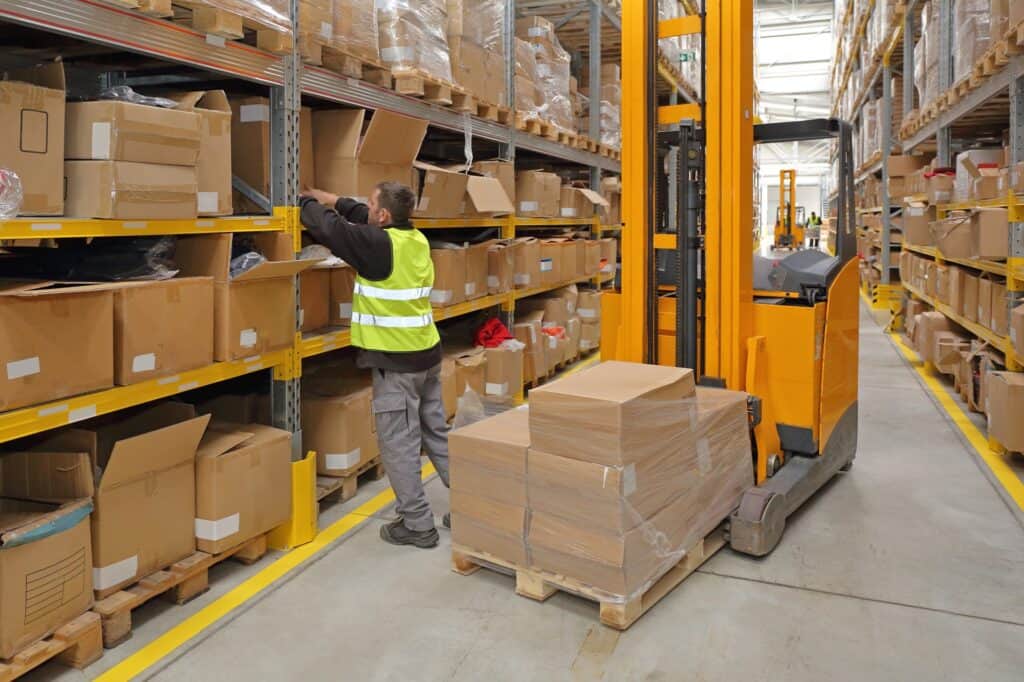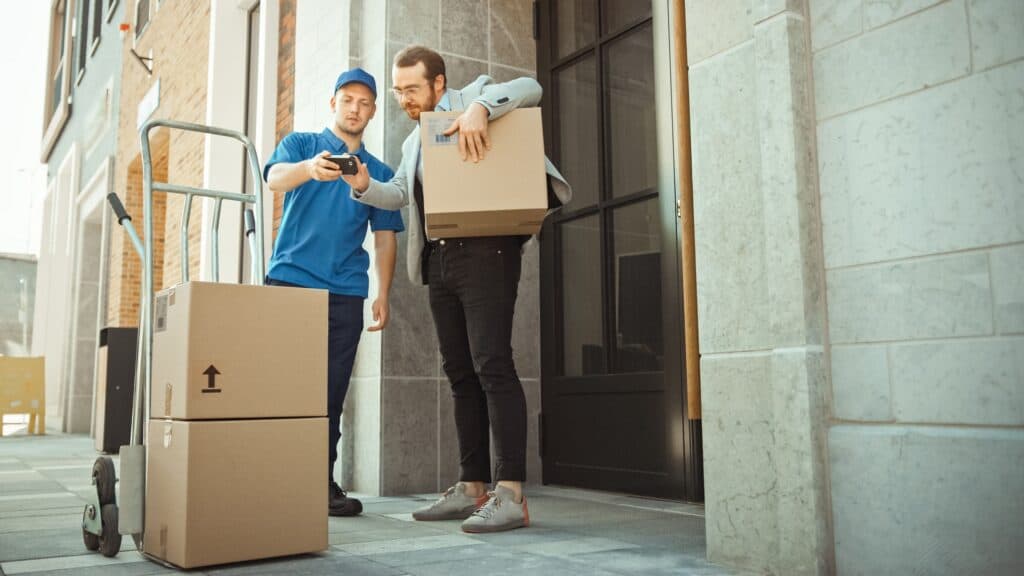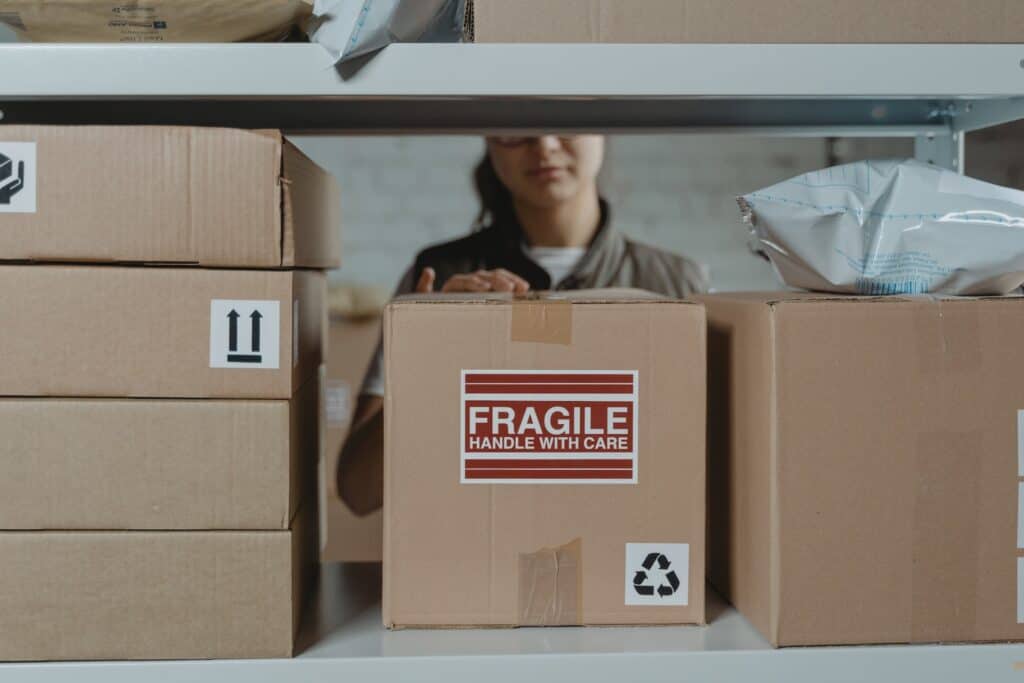What is the Difference Between Last Mile and Fulfillment?

Wise Systems

Last mile and fulfillment are two essential components of the supply chain and logistics process, especially in the e-commerce industry. While the two terms are commonly used in similar contexts, they’re not exactly the same. In this article, we’ll review the two terms and discuss the important differences between last mile and fulfillment.
In this article:
- What is Fulfillment?
- What is Last Mile?
- The Key Differences Between Last Mile and Fulfillment
- Common Last Mile & Fulfillment Challenges
- Technology & Automation in Last Mile and Fulfillment
- Final Thoughts
- Frequently Asked Questions
What is Fulfillment?

Last mile and fulfillment are two essential components of the supply chain and logistics process, especially in the e-commerce industry. While the two terms are commonly used in similar contexts, they’re not exactly the same. In this article, we’ll review the two terms and discuss the important differences between last mile and fulfillment.
What is Last Mile?

Last-mile delivery, also known as last-mile logistics and final-mile delivery, is the final leg in the supply chain—the last leg of a product’s journey. In last-mile delivery, a product is transported from a hub, warehouse, or distribution center to the customer’s delivery address.
Importantly, last-mile delivery does not encompass the transport or storage of goods that occur earlier in the logistics process, such as transportation from a manufacturer to a distribution center.
Last mile refers only to the final step in the process, from the moment a product is picked up from a local distribution center and loaded onto a delivery vehicle through the delivery of the package to the customer.
The Key Differences Between Last Mile and Fulfillment

Let’s take a look at the most significant differences between last mile and fulfillment.
Scope
The biggest difference between last mile and fulfillment is scope. Fulfillment refers to the complete process of receiving and processing an order, preparing the order, and transporting it to its next destination, while the last mile is specifically the last step in the product’s journey.
Thus, fulfillment has a much broader scope than last mile.
Facilities
Another significant difference is the facilities used. In order fulfillment, a fulfillment center—a large warehouse facility—is the primary facility used. These facilities are used to store inventory, pick orders, and package items for shipping.
In the last mile, local hubs or delivery centers are more commonly used. These facilities are used for sorting and dispatch.
Processes

While last mile and fulfillment share some processes, there are a few processes involved in fulfillment that don’t occur in the last mile, such as:
- Inventory management: Part of the order fulfillment process is managing inventory and ensuring that enough products are in stock to meet customer demand. This includes maintaining accurate inventory counts.
- Order processing: Order processing is a crucial step in the order fulfillment process. It involves handling customer orders efficiently from the moment they’re received until they’re prepared for shipment and loaded onto a truck or other transport vehicle. Last-mile delivery does not involve order processing, as the orders are already processed and have been shipped from the originating warehouse before arriving at a local distribution center.
- Packing and shipping: Order fulfillment also requires picking products from warehouse shelves and storage areas, packing them appropriately for safe transport, and loading packages onto vehicles for transport. In last-mile delivery, products are already picked and packaged.
Autonomous routing and dispatching is not only necessary, but is the future for many last-mile operations. Learn where your last-mile operations are today and make your AD&R plan. https://t.co/s5fAP9Ms4M pic.twitter.com/DK5fLF2Juq
— Wise Systems (@goWiseSystems) April 24, 2023
The primary processes involved in last-mile delivery include:
- Sorting, dispatch & routing: This includes sorting parcels, dispatching, and planning delivery routes.
- Order updates: It’s imperative to keep customers updated on the status of their package throughout the last-mile delivery process.
- Delivery: Delivering the order to the customer’s location in a timely manner and in good condition marks the end of the last-mile delivery process.
Request a demo to discover how the Wise Systems delivery automation platform can streamline your last-mile operations.
Common Last Mile & Fulfillment Challenges

Both fulfillment and last-mile delivery are complex processes. However, the last mile is widely regarded as the most complex and costly leg of the delivery process due to factors such as traffic congestion, inaccurate addresses, and customer availability.
Here’s an overview of some of the biggest and most common challenges in last mile and fulfillment:
- Inventory management: Keeping the right amount of inventory on hand is crucial for avoiding stockouts and overstocking, both of which can increase costs.
- Demand forecasting: Accurate demand forecasting enables companies to maintain the right amount of inventory and the right amount of staff to support anticipated demand. However, demand forecasting can be complex, and demand fluctuations can be unpredictable.
- Order accuracy: Order accuracy depends on everything going right through multiple processes. Picking errors, incorrect labeling, and packaging mistakes can all contribute to increased returns and unsatisfied customers.
- Fulfillment speed: Consumers increasingly demand fast delivery, often within two days or less. However, meeting these expectations is challenging without the right tools, technology, and processes.
- Shipping costs: Same-day and next-day delivery mean higher delivery costs, but these costs can cut into a company’s profits. However, offering these fast delivery times is essential for maintaining a competitive edge.
- Returns management: E-commerce growth naturally comes with an increase in returns, which can be difficult to manage. It involves not only processing customers’ refunds but also inspecting, restocking, discounting, or discarding returned items.
- Warehouse space optimization: Today’s warehouses and fulfillment centers must maximize the use of every available inch of space, but goods must also be organized in a way that supports efficient sorting and picking processes.
- Labor shortages: Not having enough staff, having a high percentage of new hires, or inadequate training often means slower and more error-prone fulfillment.
- Technology integration: There are often various tools and applications involved in order fulfillment and last-mile delivery. Properly integrating these systems, which allows information to flow seamlessly between applications, is vital for efficient operations, yet integration can be complex and costly.
- Customer communication: Today’s customers want visibility into the fulfillment and delivery process. Keeping customers informed of their order status, delivery timeline, and potential issues is a must for maintaining customer satisfaction.
Book a demo today to learn how Wise Systems connects your last-mile ecosystem by integrating seamlessly with your other systems of record.
Technology & Automation in Last Mile and Fulfillment

As technology continues to advance, last-mile delivery and fulfillment operations embrace the latest innovations to streamline and automate processes. These tools help to improve efficiency and accuracy, which ultimately increases customer satisfaction. Here’s a look at some of the major innovations impacting last-mile delivery and fulfillment in recent years.
Data Analytics
Data analytics enables companies to analyze a large volume of information related to consumer behavior, delivery patterns, operational performance, and more. Companies can leverage these insights to drive decision-making.
Route Optimization Software
Route optimization uses algorithms to calculate the most efficient delivery routes while also accounting for factors like traffic conditions and weather. Optimizing delivery routes helps to reduce travel time and fuel consumption, which also lessens a company’s environmental impact.
Autonomous Vehicles and Drones
The use of drones and autonomous vehicles continues to grow in last-mile delivery and fulfillment operations. These technologies help companies overcome challenges such as traffic congestion in urban areas and worker fatigue in fulfillment operations.
Mobile Applications

Smartphones are ubiquitous today, and they’re useful tools for both consumers and delivery professionals. For consumers, these apps — such as customer portals — help to keep customers informed about the location of their packages and the estimated delivery time.
For delivery professionals, there are various types of applications that help to streamline operations. Solutions like Mobile Manager from Wise Systems provide seamless communication for managers, merchandisers, and field reps, eliminating the need for back-and-forth status texts.
Other apps, such as Driver App from Wise Systems, give drivers a better experience with end-to-end navigation, reduced paperwork, improved communication, and the ability to monitor their daily performance.
Request a demo today to learn more about Wise Systems’ comprehensive suite of tools for every stage of the delivery process.
Internet of Things (IoT) Devices
The Internet of Things plays an important role in monitoring package conditions during transit. IoT sensors can track environmental conditions such as temperature and humidity, which is critical for goods requiring precise climate control, such as food and pharmaceuticals.
Crowdsourced Delivery Platforms
Crowdsourced delivery platforms, a part of what’s become known as the “gig economy,” connect businesses that need delivery services with local independent contractors who serve as couriers.
Crowdsourced delivery offers several advantages, such as scalability and flexibility, enabling companies to quickly adapt to unexpected spikes in demand without the cost of maintaining a large, permanent workforce. This allows companies to maintain lower overhead costs while still accommodating shifts in demand with ease.
Final Thoughts
Wise Systems provides the best in delivery automation software for last-mile delivery, and integrates with your existing tech stack. We’d love to hear more about your routing challenges and see where we can help! Touch base with us here: https://t.co/G6r196eCS4 pic.twitter.com/CujINJOBTm
— Wise Systems (@goWiseSystems) March 2, 2023
Last mile and fulfillment are both crucial parts of the overall supply chain and logistics process. Last-mile delivery is just one component of the fulfillment process, focusing on moving a parcel from a local distribution hub to the customer’s delivery address.
Last-mile delivery is the most expensive segment of the product’s journey, but optimizing this leg of the supply chain offers significant benefits.
The Wise Systems delivery automation platform is a suite of solutions designed for every stage, from routing and dispatch to customer communication and performance management. Book a demo today to discover how Wise Systems can help you optimize your last-mile delivery processes.
Frequently Asked Questions
What is the meaning of fulfillment?
Fulfillment refers to the series of processes involved in completing an order, such as receiving, processing, packing, and shipping products to customers. It ensures that customers receive their orders accurately and promptly.
What comes before last-mile delivery?
Before last-mile delivery, orders go through processes like picking and packing at a fulfillment center, followed by transportation to a local hub or distribution center (which includes first-mile and middle-mile delivery). These steps ensure that the products are ready and properly sorted for the final delivery to the customer.
Why is the last mile important in logistics?
The last mile is important in logistics because it significantly impacts customer satisfaction and overall delivery efficiency. It’s the final touchpoint in the supply chain where goods reach the customers. As such, errors or delays at this stage can adversely affect the customer experience and the company’s reputation.
What is the difference between logistics and fulfillment?
Logistics is a broader term encompassing the overall management of how resources are acquired, stored, and transported to their final destination. Fulfillment, on the other hand, is a subset of logistics focusing specifically on completing customer orders, including storing, picking, packing, and shipping goods.
What are the benefits of last-mile optimization?
Last-mile optimization benefits include cost-efficiency, improved delivery speeds, enhanced customer satisfaction, and sustainability. It involves streamlining operations, such as route planning and customer communications, to make the last leg of the delivery process as efficient and customer-friendly as possible.
How does real-time tracking impact last-mile delivery?
Real-time tracking enhances last-mile delivery by providing transparency for both businesses and customers. It improves operational efficiency by enabling precise delivery estimates, optimizing routes, and quickly addressing delays or issues. For customers, it offers live updates on package locations, increasing satisfaction and reducing uncertainty.
How are returns handled in fulfillment vs. last mile?
In fulfillment, returns are typically managed by processing the return request, restocking inventory, and issuing refunds or exchanges. In last-mile delivery, the focus is on retrieving the item from the customer and transporting it back to a fulfillment center. Fulfillment handles the back-end logistics, while last mile focuses on the actual pickup and transit of returned goods.
What are the environmental impacts of last-mile delivery?
Last-mile delivery has significant environmental impacts, primarily due to the increased emissions from vehicles making multiple, often small, deliveries. Inefficient routing and higher delivery demands contribute to traffic congestion and air pollution. However, sustainable solutions such as electric vehicles, route optimization, and delivery hubs are being implemented to mitigate these effects.

